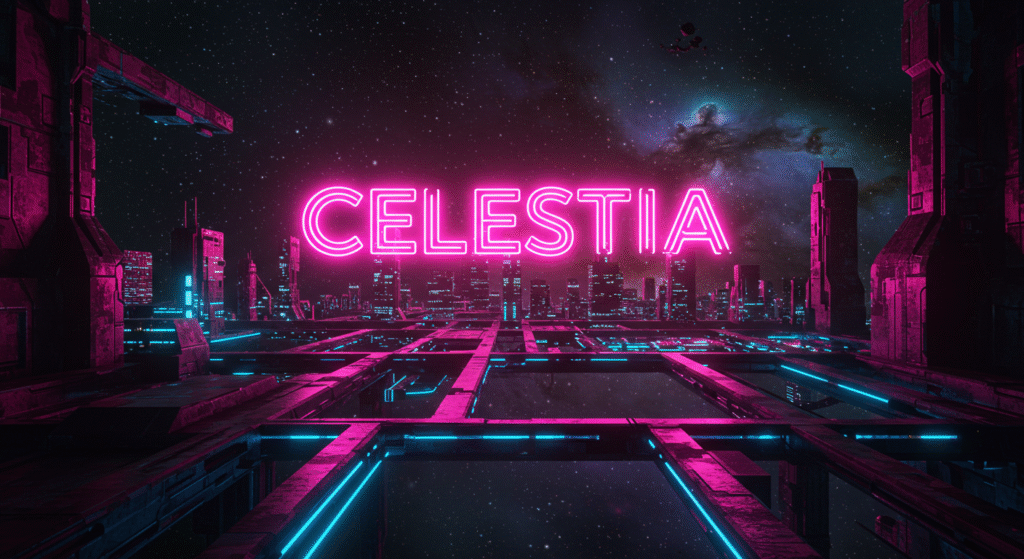Celestia is a groundbreaking project in the blockchain space, distinguished as the first modular blockchain network. This innovative design aims to tackle the scalability challenges faced by traditional monolithic blockchains. Instead of a single chain handling all functions, Celestia separates the consensus and data availability layers, allowing other chains to handle execution. This article delves into the history of Celestia, the background of its founder, Mustafa Al-Bassam, the technology underpinning the project, and its future potential.
The Visionary: Mustafa Al-Bassam
Celestia’s origins can be traced back to the work of Mustafa Al-Bassam, who laid the foundation for the project with his 2019 paper, “LazyLedger,” while pursuing his Ph.D. at University College London (UCL). Al-Bassam’s research focused on addressing the scalability limitations of layer-0 blockchains.
Interestingly, Al-Bassam’s background extends beyond academia. In his youth, he was involved with the hacker group LulzSec, known for high-profile cyberattacks against entities like Sony, Fox, the FBI, and the CIA. Al-Bassam’s past experiences, though controversial, have arguably provided him with a unique perspective on cybersecurity and the challenges of decentralized systems.
Al-Bassam also co-founded Chainspace, a company specializing in smart contract creation, which was later acquired by Facebook. This diverse background, spanning from hacking to academic research and startup ventures, has shaped his vision for Celestia and its potential to revolutionize blockchain architecture.
The Technology Behind Celestia
Celestia’s modular architecture represents a departure from traditional monolithic blockchains like Bitcoin and Ethereum. In a monolithic design, a single chain is responsible for all functions:
- Consensus: Ordering transactions.
- Execution: Processing transactions.
- Data Availability: Ensuring transaction data is accessible.
Celestia, on the other hand, separates these functions. It primarily focuses on data availability and consensus, while execution is handled by separate chains called “rollups.” This modular approach offers several advantages:
- Scalability: By separating execution, Celestia enables multiple rollups to operate in parallel, significantly increasing the overall throughput of the system.
- Flexibility: Developers can customize their rollups to suit their specific needs, choosing their own execution environments and virtual machines.
- Efficiency: Celestia’s focus on data availability allows it to optimize this specific function, leading to greater efficiency.
Celestia employs a technology called data availability sampling to ensure that transaction data is available without requiring every node to download the entire chain. This innovation allows light nodes to verify data availability by sampling only a small portion of the data, making the network more accessible to a wider range of users.
Future Potential and Utility
Celestia’s modular architecture has the potential to transform the blockchain landscape. By providing a scalable and flexible data availability layer, Celestia can enable the development of a new generation of decentralized applications.
The project’s potential use cases span a wide range of industries, including:
- DeFi (Decentralized Finance): Celestia can provide the infrastructure for highly scalable and efficient DeFi applications.
- Gaming: The high throughput and low latency offered by Celestia can enable more immersive and complex blockchain-based games.
- Social Media: Decentralized social media platforms can benefit from Celestia’s scalability and censorship resistance.
Celestia’s native token, TIA, plays a crucial role in the network, serving several functions:
- Transaction Fees: TIA is used to pay for transaction fees on the Celestia network.
- Staking: TIA holders can stake their tokens to secure the network and earn rewards.
- Governance: TIA is used to participate in the governance of the Celestia network.
Challenges and Considerations
Despite its potential, Celestia also faces challenges. As a relatively new technology, it needs to demonstrate its security and reliability in real-world conditions. Additionally, the adoption of Celestia’s modular architecture will require a shift in the way developers build blockchain applications.
The long-term success of Celestia will depend on its ability to:
- Foster a thriving ecosystem of rollups: Attracting developers to build on Celestia is crucial for its growth.
- Maintain strong security: Ensuring the integrity and availability of data is paramount.
- Compete with other scaling solutions: Celestia faces competition from other Layer-1 and Layer-2 solutions.
Conclusion
Celestia represents a significant step forward in blockchain technology. Its modular architecture, driven by the vision of Mustafa Al-Bassam, offers a promising solution to the scalability challenges that have plagued the industry. By separating data availability and execution, Celestia paves the way for a more scalable, flexible, and efficient blockchain ecosystem. While challenges remain, Celestia’s potential to transform the future of decentralized applications is undeniable.

